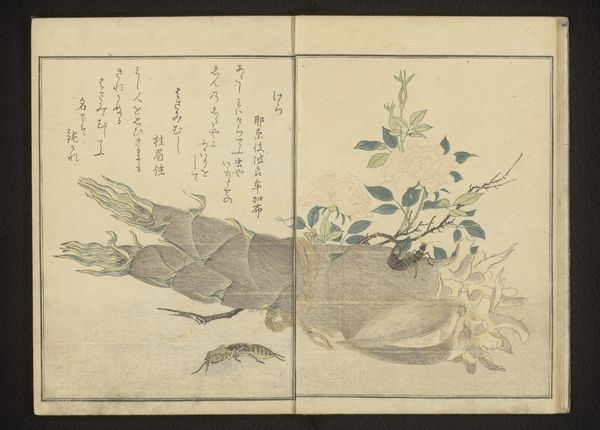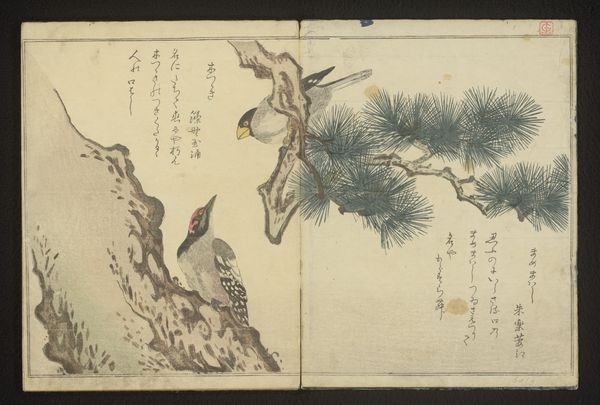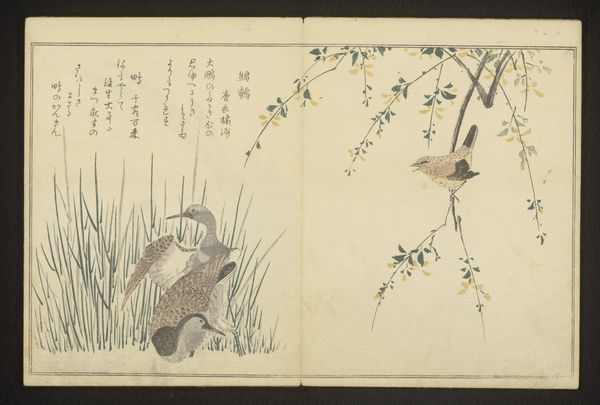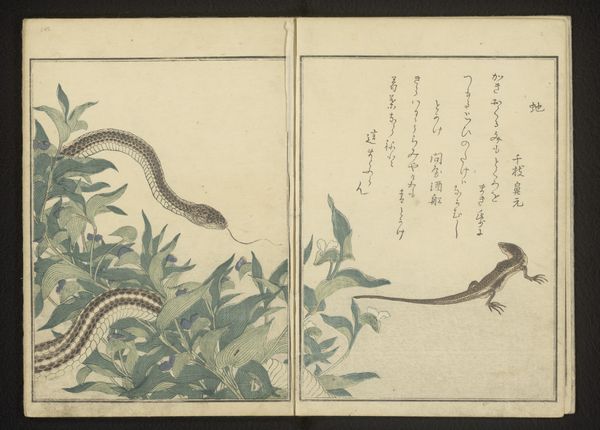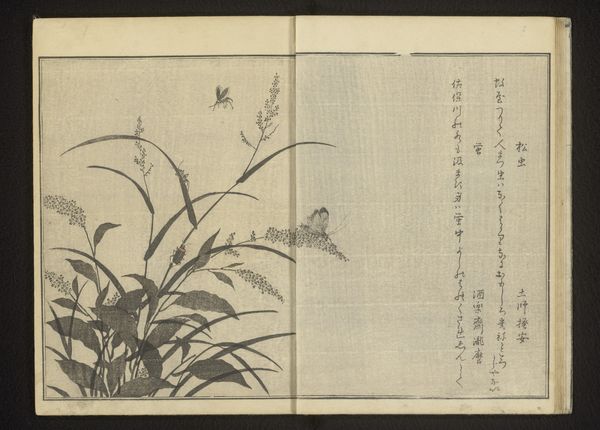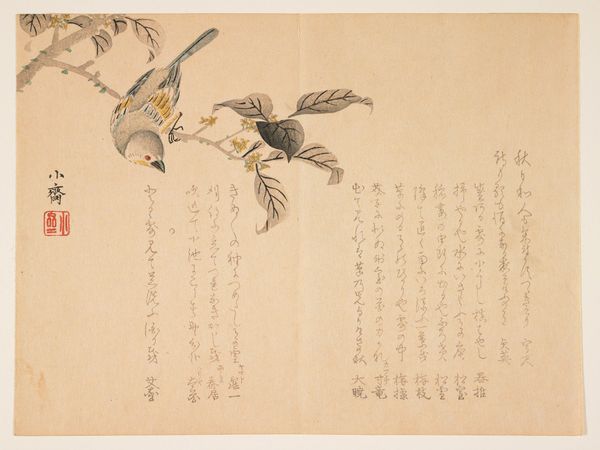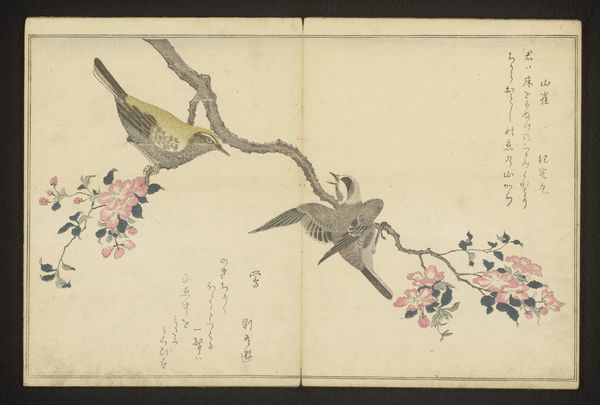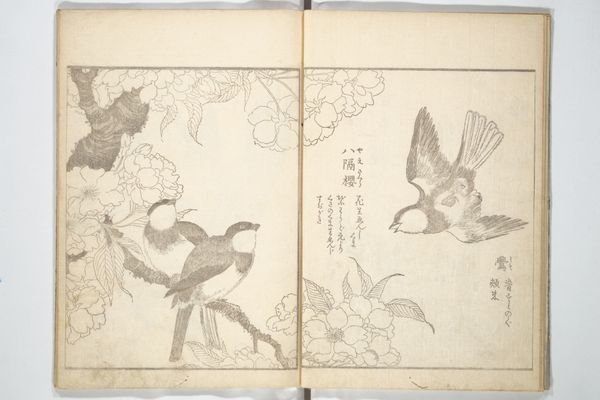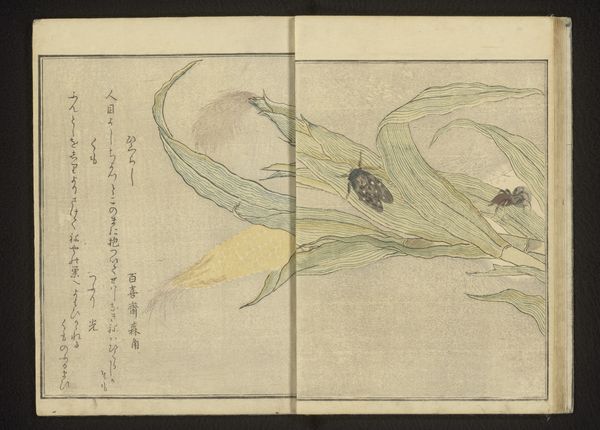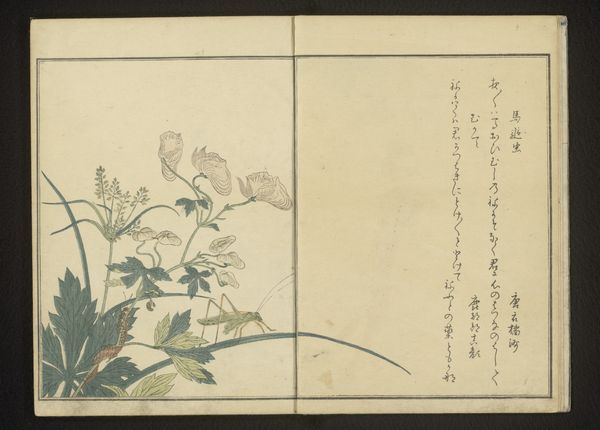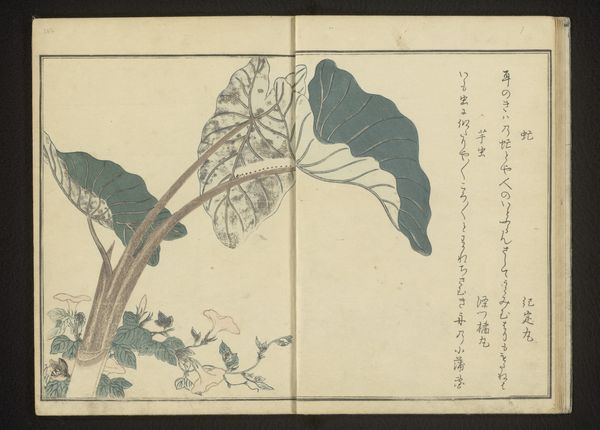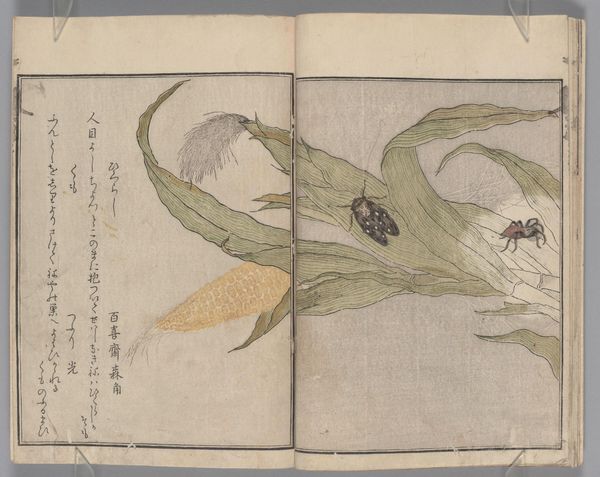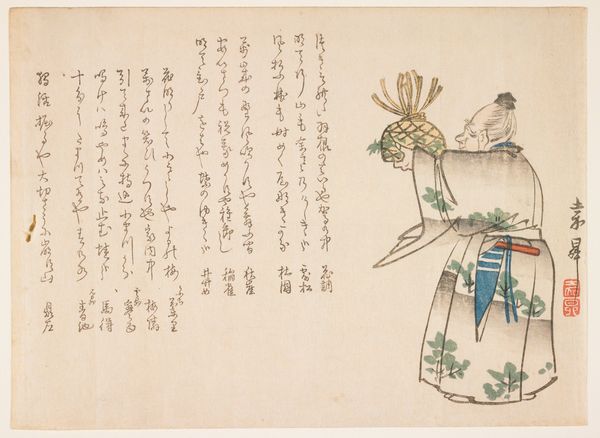
drawing, print, paper, ink
#
drawing
#
aged paper
# print
#
sketch book
#
hand drawn type
#
landscape
#
ukiyo-e
#
figuration
#
paper
#
personal sketchbook
#
ink
#
pen-ink sketch
#
ink colored
#
line
#
pen work
#
sketchbook drawing
#
storyboard and sketchbook work
#
sketchbook art
Dimensions: height 251 mm, width 187 mm
Copyright: Rijks Museum: Open Domain
Curator: This serene image before us is Kitagawa Utamaro's "Cormorant and Heron," created around 1796. It's currently housed at the Rijksmuseum. What strikes you first about this spread? Editor: The minimal application of ink immediately catches my eye. The drawing seems economical, using only what is strictly necessary to delineate form and movement. Curator: Indeed. This piece offers an intimate glimpse into the natural world, viewed through the lens of Ukiyo-e traditions. It raises fascinating questions around the production and accessibility of printed imagery during the Edo period, especially with its theme of nature. How might prints like these have been distributed? What role did labor and the workshops of artisans play? Editor: From a materialist standpoint, that very accessibility is critical. The production process itself democratized the image, disseminating these sketches to a wide audience beyond the elite. The visible woodgrain texture adds to the artwork’s inherent qualities. I notice the hand-drawn quality. Curator: Absolutely, and considering the period and genre, gender and labor are crucial factors. Women artists, for example, often played significant, yet obscured, roles in the production of these prints, contributing their skills and perspectives to a male-dominated field. The depiction of nature, even in a seemingly neutral scene, engages with complex social dynamics. Editor: Right, so it's never simply about "pretty birds". This image and its circulation had real material implications in 18th-century Japan. And it continues to prompt insightful discourse regarding class, access, and labour to this day. Curator: Precisely. Thinking about it through contemporary lenses, this prompts critical examination around environmental narratives and our engagement with the natural world, while simultaneously honouring the labour and craft invested. Editor: These minimalist images highlight how artistic vision combines with physical resources, production methods, and then is spread around as culture for mass use.
Comments
No comments
Be the first to comment and join the conversation on the ultimate creative platform.
